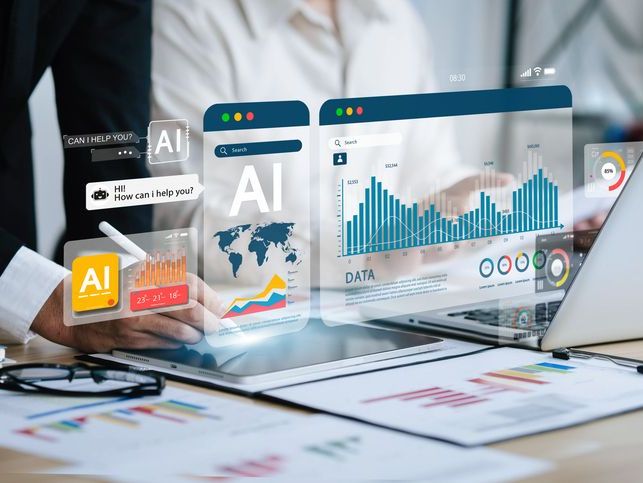Workforce management looks different than it did even a few years ago — and the pace of change keeps accelerating. Technology, shifting employee expectations and new organizational priorities all shape how leaders manage teams today.
The challenge? Understanding what all those changes mean for your business.
In this article, we’ll break down key workforce management trends to help you understand what’s changing and what it means for the future.
6 Prominent Trends in Workforce Management
As technology advances and workplace expectations evolve, your workforce management strategies must keep up. These six trends highlight what’s changing — use them to prepare and adapt.
1. Upskilling is becoming a must-have
Is your company having a hard time attracting top talent? Most are. The current U.S. labor shortage is 70%, meaning seven in 10 employers are unable to find the right employees for job vacancies.
In response, organizations are foregoing degree requirements in favor of unconventional approaches to fill positions. For example, nearly two-thirds of employers use skills-based hiring in 2025. This approach prioritizes finding candidates with capabilities like problem-solving and good communication over traditional credentials like degrees and prior experience. The idea is simple — when a role is hard to fill, train or upskill candidates with core skills.
Looking ahead, upskilling and reskilling current employees will be just as critical. Just because you find the experience you need today, there’s no guarantee those skills will evolve as your company scales. In fact, employers expect 44% of employees’ skill needs to change in the next five years. Proactively training employees in new skills empowers them to succeed in different roles as your organization’s needs evolve.
With 94% of employees saying they’d stay at a company longer if it invested in helping them learn, this type of growth has always been important for employee engagement. Now, it’s critical for workforce management as a whole.
2. Flexible work arrangements are the standard
Remote work and hybrid work were considered trends during the pandemic, but have proven to have staying power. In 2025, 91% of companies offer some kind of flexible working arrangement.
If your company doesn’t offer some form of flexible work, you’re at a severe disadvantage for attracting new talent and retaining employees. Research shows roles allowing employees to work from home full- or part-time attract seven times as many applicants as in-person listings. Furthermore, a Pew Research Center survey found 46% of remote employees would quit if their employer stopped allowing them to work from home.
Offering flexible work is no longer just a perk; it’s expected. If you don’t offer it or plan to end a current policy that allows employees to work from home, make sure you have a thorough return-to-office strategy backed by data to minimize the consequences.
3. Nearly all companies are increasing their spending on AI
It’s no secret AI and automation are reshaping the workforce management landscape, but big changes are still on the horizon. According to McKinsey & Company, 92% of companies plan to increase their investments in AI over the next three years.
The research firm also predicts generative AI will help automate 30% of hours currently worked within six years. For example, data shows marketers who use generative AI save at least three hours on each piece of content they create. Sales reps and customer service agents save more than two hours a day by automating manual tasks and generating responses. However, they don’t work less. Instead, they’ devote those extra hours to strategizing, problem-solving and improving cross-departmental collaboration.
If you’re still on the fence, now’s the time to start exploring AI. These technologies streamline administrative tasks, provide valuable workforce insights and guide important decisions. When used with workforce management solutions, AI-powered predictive analytics also make it easier to identify potential skills gaps and project staffing needs.
4. Career paths are becoming more dynamic
For decades, organizations have relied on institutional knowledge from long-term employees acquired over years with the same company. Now, people are more likely to switch jobs frequently— and to change entire career paths when they do.
According to a study by Indeed, 64% of workers who switched jobs from 2022 to 2024 also changed careers. In a 2023 survey, 83% of Gen Z workers say they intentionally job hop to diversify skills, build career capital and find environments that align with their values. More than 40% plan to stay with their current employers for just two years, and only 35% are willing to stick around for three or more. Across generations and industries, the average employee tenure is just over four years.
This trend means employers should either accept shorter tenures as the status quo moving forward, or put greater emphasis on retention through dynamic career paths that provide development opportunities without requiring employees to change companies.
5. Companies are investing in the employee experience
Given other trends in flexible work, career switching and the demand for more upskilling opportunities, it’s no surprise to see business leaders investing in the employee experience. In fact, U.S. companies spend over $100 billion annually on employee engagement and experience initiatives. Many are experimenting with four-day workweeks, taking steps to support work-life balance and loosening restrictions on remote work to improve the employee experience and satisfaction.
But rather than flying blind, successful companies are turning to employee experience management software for actionable insights to guide decision-making. As pressure to attract and retain top talent continues to increase, leaders can’t afford to guess. Employee experience management software provides concrete evidence of what employees need to feel satisfied and flourish within your organization.
6. Organizations are stepping up cybersecurity and compliance efforts
While employees value flexible work arrangements, they increase your risk of data breaches and compliance issues. You may have a secure network in the office, but employees’ home setups don’t offer the same level of protection.
There’s also a greater risk human error could unintentionally lead to security issues. From stolen credentials to employee account takeover attacks, 95% of all breaches involve some form of human error — and AI is making it even easier for hackers to trick people into sharing private data.
For this reason, companies across industries are opting to step up security, with global cybersecurity spending predicted to increase 12.2% in 2025. One of the best ways to prevent breaches and compliance issues is by implementing user activity monitoring software. By tracking employee activity in real-time, employers set up warning systems and get alerts when a potentially risky activity occurs. This provides an opportunity to remedy the situation immediately before it escalates.
Streamline workforce management with ActivTrak
Staying ahead of the latest workforce management trends is key for companies looking to thrive in today’s dynamic business environment. While these six trends are far from the only changes happening today, they represent the most important areas to track.
Whether it’s embracing remote work, leveraging generative AI or prioritizing the employee experience, successful organizations proactively adopt new strategies. Workforce management is no longer an administrative function — it’s now a strategic driver of business success. And with the best workforce management software, you can track key metrics to guide every decision. If you’re planning for a big change in the size of your workforce or simply want to get ahead of the trends detailed above, ActivTrak provides an enterprise workforce management solution to suit your needs.
Request a demo to see how companies like yours use ActivTrak’s workforce management solution to track trends and stay ahead of the curve.





